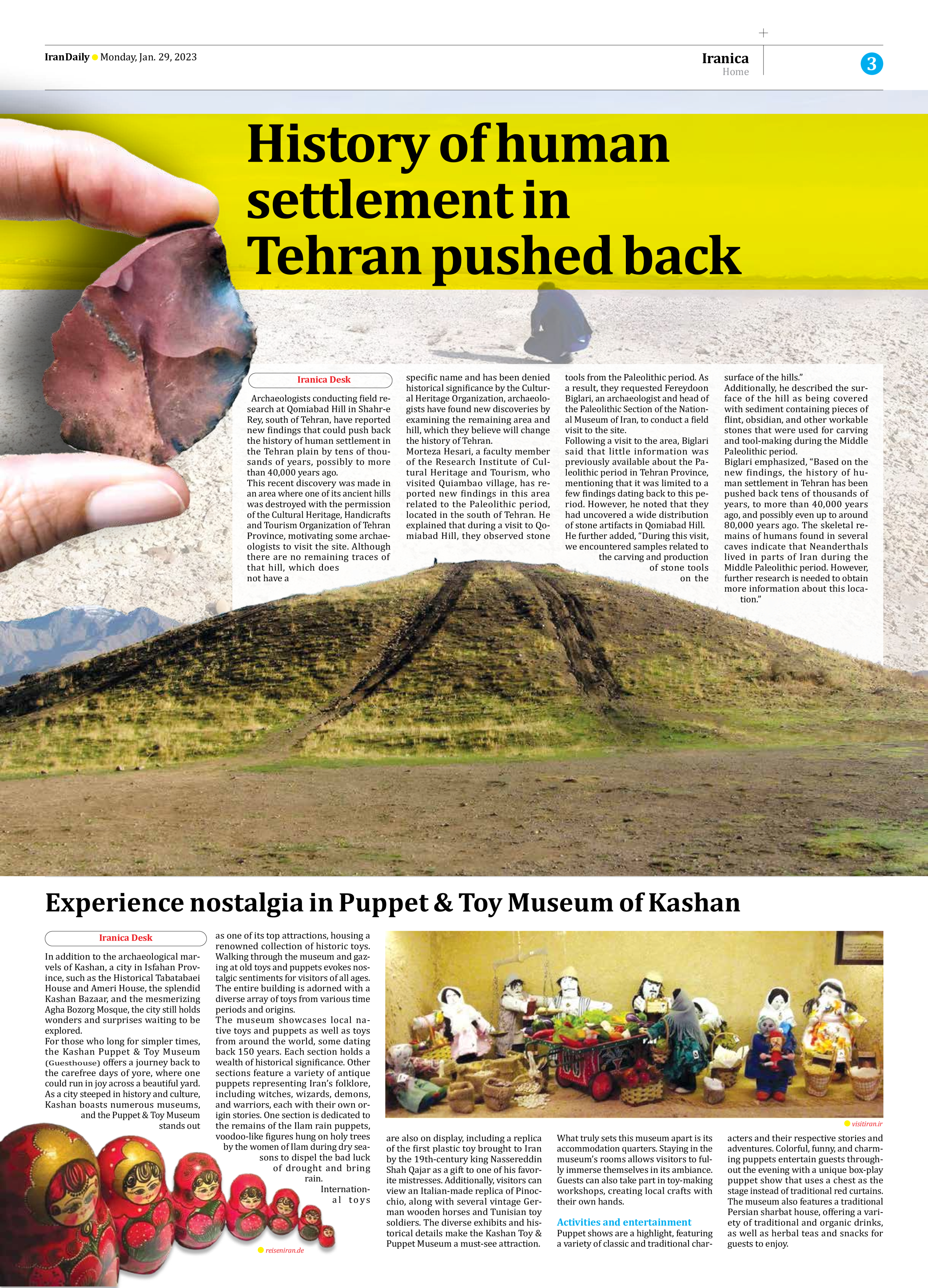
History of human settlement in Tehran pushed back
Archaeologists conducting field research at Qomiabad Hill in Shahr-e Rey, south of Tehran, have reported new findings that could push back the history of human settlement in the Tehran plain by tens of thousands of years, possibly to more than 40,000 years ago.
This recent discovery was made in an area where one of its ancient hills was destroyed with the permission of the Cultural Heritage, Handicrafts and Tourism Organization of Tehran Province, motivating some archaeologists to visit the site. Although there are no remaining traces of that hill, which does not have a specific name and has been denied historical significance by the Cultural Heritage Organization, archaeologists have found new discoveries by examining the remaining area and hill, which they believe will change the history of Tehran.
Morteza Hesari, a faculty member of the Research Institute of Cultural Heritage and Tourism, who visited Quiambao village, has reported new findings in this area related to the Paleolithic period, located in the south of Tehran. He explained that during a visit to Qomiabad Hill, they observed stone tools from the Paleolithic period. As a result, they requested Fereydoon Biglari, an archaeologist and head of the Paleolithic Section of the National Museum of Iran, to conduct a field visit to the site.
Following a visit to the area, Biglari said that little information was previously available about the Paleolithic period in Tehran Province, mentioning that it was limited to a few findings dating back to this period. However, he noted that they had uncovered a wide distribution of stone artifacts in Qomiabad Hill.
He further added, “During this visit, we encountered samples related to the carving and production of stone tools on the surface of the hills.”
Additionally, he described the surface of the hill as being covered with sediment containing pieces of flint, obsidian, and other workable stones that were used for carving and tool-making during the Middle Paleolithic period.
Biglari emphasized, “Based on the new findings, the history of human settlement in Tehran has been pushed back tens of thousands of years, to more than 40,000 years ago, and possibly even up to around 80,000 years ago. The skeletal remains of humans found in several caves indicate that Neanderthals lived in parts of Iran during the Middle Paleolithic period. However, further research is needed to obtain more information about this location.”







